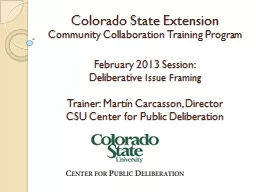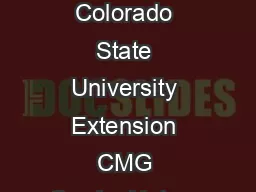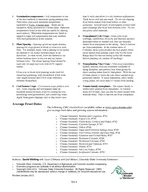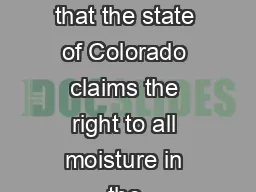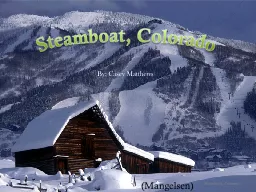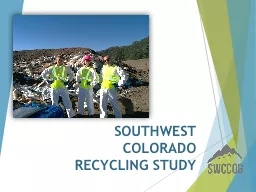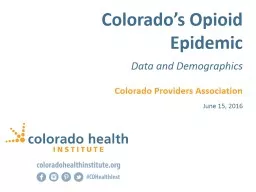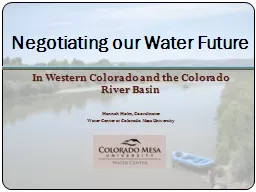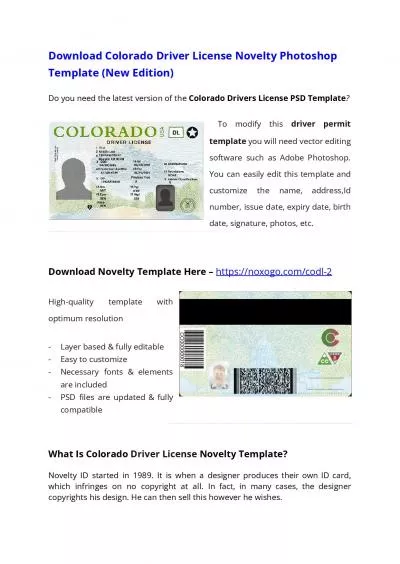PPT-Colorado State Extension
Author : jane-oiler | Published Date : 2016-04-23
Community Collaboration Training Program February 2013 Session Deliberative Issue Framing Trainer Martín Carcasson Director CSU Center for Public Deliberation
Presentation Embed Code
Download Presentation
Download Presentation The PPT/PDF document "Colorado State Extension" is the property of its rightful owner. Permission is granted to download and print the materials on this website for personal, non-commercial use only, and to display it on your personal computer provided you do not modify the materials and that you retain all copyright notices contained in the materials. By downloading content from our website, you accept the terms of this agreement.
Colorado State Extension: Transcript
Download Rules Of Document
"Colorado State Extension"The content belongs to its owner. You may download and print it for personal use, without modification, and keep all copyright notices. By downloading, you agree to these terms.
Related Documents

